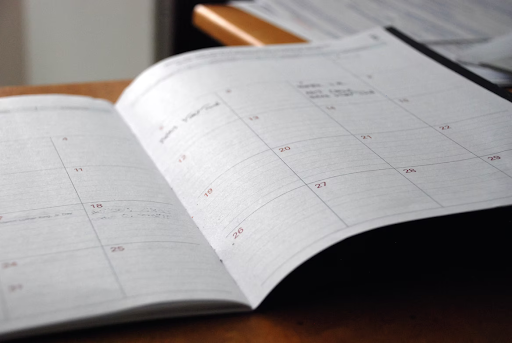How do you establish expectations when someone hires you to complete a project?
You write a statement of work to detail the requirements, timelines, and other terms of your working relationship.
Writing a statement of work is not easy, especially when you consider that it is a legally binding document that both parties will adhere to for the project’s duration. Instead of scratching your head over the details, let us help by giving you some great ideas about writing this document.
What is a Statement of Work?

A statement of work, or SOW, is a document that provides an overview of a project from start to finish.
This document binds and informs the project stakeholders of essential details, such as requirements, deliverables, and fee schedules. In a lot of cases, these documents can be signed by both parties with electronic signature software such as DottedSign to speed things up.
Many industries rely on statements of work such as business proposals to establish project expectations between two parties. Different industries base their statements of work on the most appropriate measurable for their situation. The three most common are:
- Design/Detail
- Time/Effort and Materials/Unit Rate
- Performance-Based
Design/detail statements of work clearly define the requirements that one party must follow in completing work for another. You will often find these in construction, manufacturing, or government contracts.
Time/Effort and Materials/Unit Rate statements of work are broader in scope, defining the service that one party will perform based on the hours or materials required to complete a project.
The flexibility of this structure makes it ideal for hourly or other temporary contract workers.
A performance-based statement of work concentrates on the result rather than the means of getting there. It defines the expectations of the buyer and any provided resources but does not dictate how the service provider will achieve the agreed-upon outcomes.
This type is the standard for most government contracts.
7 Great Ideas on How To Write a Statement of Work
Writing a statement of work can be challenging, especially if you are new to a field or it is your first time defining the details of a project.
If you are preparing your first SOW, here are a few great ideas for organizing it into relevant sections that get the job done without becoming too long or complex.
1. Scope of Work
The scope of work describes the work that you will perform for a buyer.
The scope of the work section tends to be more general, leaving the finer details for later in the document. Yours should cover the work you will perform, measured by service, product, or time.
A good scope of work is concise and direct. You can keep yours brief by using a bulleted list to state the tasks you will complete. Keep it general and save the finer details for your “Tasks” section, described below.
For example, if you were writing a statement of work for a construction project, your scope of work should include the following:
- The desired outcome of your project
- The materials you will need and who will supply them
- The time it will take you to complete the project
- The steps you will take to complete the project
This information can also be called upon when crafting a professional construction invoice once work is completed, so it’s useful not only for the client, but for your own record keeping as well.
2. Objectives
Your objectives section describes the reasoning behind and purpose of the project that you are completing.
Avoid going into extensive detail in this section. Instead, summarize the value of the project by asking yourself the following questions:
- Why is this project worth completing?
- Why should someone pay for this project?
- What value will the finished project bring to others?
For example, suppose you are a contractor completing a statement of work for building a town pool. In that case, you can include information about the significance of the completed pool to the larger community.
3. Schedule
The schedule section of your statement of work defines a timeline by which you will complete the project. This section clearly states when the client can expect to receive your deliverables and your finished project.

A great schedule “hack” is to estimate the timing of each task you need to complete. Before writing your schedule section, think through the process and note the estimated time each part of the project will take.
Remember to consider factors outside of your control, such as obtaining materials or services from other parties.
Once you have your estimated times, you can ensure that you remain realistic in establishing your project schedule.
Avoid setting an unrealistic schedule that you will have difficulty maintaining throughout the project. Remember that the statement of work is a binding document, so struggling to follow the plan will likely result in a challenging relationship with your clients.
For example, suppose you are in a contract to provide a new government building. In that case, your schedule might define the dates that the town can expect to see blueprints, specific construction-related milestones, and a completed building.
4. Tasks
The tasks section expands upon your scope of work section to provide more detail about the actions that you will take to complete the project. Instead of generally speaking about what work you will accomplish, you will list the specific tasks and requirements you will meet along the way.
One great way to create your tasks section is to ask yourself: What do I need to do to complete this project efficiently and effectively?
After you have your list, review it to make sure that each task on your list meets the following requirements:
- Essential to the completion of the project
- Efficient (it does not have the same purpose as another task on your list)
- Timely (you can complete it on time)
5. Deliverables
Your deliverables section lists each deliverable you commit to providing to the buyer. This section differs from your tasks because it specifies the tangible products you will produce rather than your actions while working on the project.
It is essential to clearly define each deliverable to ensure that you are both on the same page about what will come of your working arrangement.
It is always a great idea to be as specific as possible to avoid confusion or misunderstandings in defining your deliverables.
For example, if you are a website designer selling a completed website, your deliverables should not simply say “website.” Instead, specify the details of the final product, such as the number of web pages on the website.
6. Expected Outcomes
Defining your expected outcomes in your statement of work keeps you and your clients on the same page about the project expectations. When you write your expected outcomes section, define the finished project’s parameters precisely.
This section is always important but can be even more so when your expected outcomes are not easily quantifiable.
For example, if you provide search engine optimization services, it can take weeks or even months to see results. In that case, you will want to clearly explain this in your expected outcomes to ensure that your client does not become unhappy if they do not see results overnight.
7. Terms, Conditions, and Payment
The final section we will discuss here is your terms, conditions, and payments section.
This section is among the most significant of your statement of work because it protects all parties from misbehavior.
It is also how you will get paid.

Clearly lay out a schedule for how your client will pay for your work in this section. Most people organize their fee schedules in one of the following ways:
- By deliverable: the client pays you upon receipt of specified deliverables during the project
- By schedule: the client pays you on fixed dates during the project, regardless of delays in deliverable
If you have the option, arranging your fee schedule by schedule is generally better for you (as the service provider) because you will receive your payments regularly regardless of delays outside your control.
How to Layout Your Statement of Work
Now that you know these great ideas for writing your statement of work, it’s time to format your document effectively. Follow our tips below to ensure that your document meets its goals and feels professional to your clients.
Start With a Background Section
Open your statement of work with a short background section about the project. A background section is a great way to introduce both parties involved in the SOW and a brief description of the project you will complete.
Include the following in this brief section
- The names and descriptions of both parties
- The type of project
- The effective date of the statement of work
For example, suppose you are a software designer. In that case, your background section could include the company hiring you, a description of your qualifications, the software you are designing, and the effective date of your statement of work.
Separate Your Statement of Work Into Clear Sections
While there is no official format for a statement of work, we recommend separating the individual sections of your document.
Separating your sections will allow you to stay organized while writing it and ensure that you do not accidentally leave out any information.
It will also help all parties involved quickly find the information they are searching for in the document.
When you write your statement of work, include each of the sections that we discussed above. Depending on your industry and specific project, you can add other sections as you feel you need them.
Different potential sections might include location or special requirements for your project.
Focus on Clarity Over Everything Else
While it may be tempting to fill your statement of work with aesthetically pleasing elements or lengthy writing and descriptions, remember that this is a binding agreement between you and your client.
Clarity is essential, meaning there can be no room for interpretation in this document.
Keep your writing direct, your layout simple, and remove anything that does not need to be there. By remaining as concise and to the point as possible, you will ensure no miscommunication between you and your client.
Use Bulleted Lists Where Possible
As we already mentioned, clarity is the key to success in your statement of work. Bulleted lists are a great way to break up long chunks of text and make important information easy to find.
They will also help you stay concise as you write because they work well for short phrases instead of long sentences.
We recommend incorporating bulleted lists into your statement of work in any sections that list specific details, such as your Tasks section or your Schedule section.
Don’t Let Your Layout Get in the Way
While many of us value the aesthetics of our professional documents, be careful not to allow your layout or graphic design to over-complicate your statement of work.
Avoid including large graphics or other design elements unless they are directly related to a section in your document.
In terms of formatting, stick to your regular text accompanied by an appropriate heading format. Use your headings to distinguish between sections.
Place your logo in the top corner of your document or keep it on your title page to avoid distracting from your statement of work. If you don’t have a logo yet, explore different logo ideas to get inspired.
You can create business proposals and statements of work with Prospero. Sign up today!
Additional Resources
There are plenty of resources out there that can help you learn more about writing a quality statement of work for yourself or your clients. You can find many free templates simply by searching the name of your industry with “statement of work” in your favorite search engine.
As we mentioned, your SOW is a binding document. As such, if you would prefer to have it approved by someone with legal expertise, there are many people out there who provide these services.
One popular option is Rocket Lawyer, which provides both legal knowledge and statement of work templates that you can adapt for your purposes.
Another option to help you write your statement of work is project management companies. Project management companies make their living by organizing different projects, so this document is right up their alley.
Some will go so far as to write them for you, while others provide software or other programs to help you write your statement of work by yourself.




